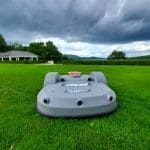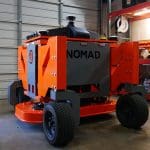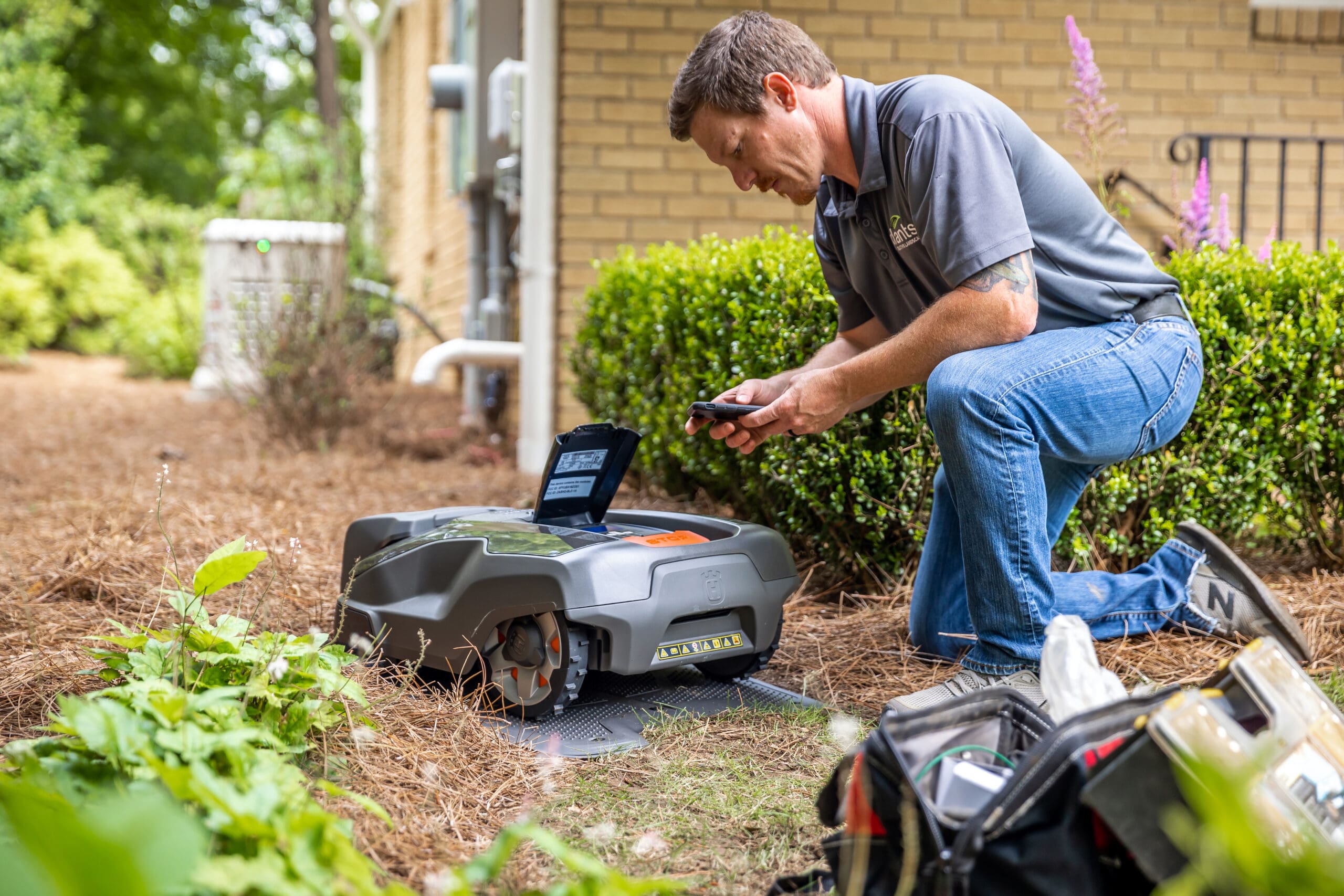
“Landscaping is a game of minutes where you’re trying to be as productive as possible,” says Jarrett Herold, co-founder and COO of Electric Sheep Robotics, Inc., based in San Francisco, California.
This is why many landscape companies are seeking a competitive edge with robotic mowers.
“Labor management remains a top priority for our company, and integrating robotic equipment enables us to redeploy our current workforce to other tasks while these machines handle routine activities,” says Corey Williams, president of Color Burst Landscapes, based in Nashville, Tennessee.
Why Robotics?
Robots can take on monotonous tasks like mowing and also increase the efficiency of these jobs in certain cases. For instance, the Military Aviation Museum in Virginia Beach, Virginia, has a collection of vintage aircraft arrayed on over 130 acres of grass that needs to be cut constantly.
Keegan Chetwynd, director of the Military Aviation Museum, estimates they save around 260 hours per iMow each year.

“They save money, of course, but more importantly they save time,” Chetwynd says. “That time savings and the ability to re-focus employees on education and delivering a better guest experience means that our museum can’t afford to NOT have iMows supporting the team.”
Where there are early adopters, there are also skeptics.
Justin Mosely, maintenance business development for Plants Creative Landscapes, based in Decatur, Georgia, encourages those still wary of robotic mowers to test them out first at their home or company headquarters. This will allow you to understand the benefits of continuous mowing and the current shortcomings of these machines.
“You can get yourself into a pickle if you go out and install 10 of these things and you don’t really know what you’re doing,” Mosley says. “You’re just going to end up with a lot of problems and headaches.”
Tim Blinten, maintenance production manager for Mariani Landscape, based in Lake Bluff, Illinois, agrees you should start small and learn.
Williams suggests arranging demos with vendors like Sycthe as they can provide insights into how robotics can integrate with your portfolio of properties. Herold adds that you don’t need to be the first in the industry to try things, but you do need to be aware of how people are leveraging technology as things evolve.
Benefits of Robotic Mowers
Some of the main benefits of implementing robotic mowers include offsetting labor, increasing efficiency and improving customer satisfaction.
“It enables us to redistribute our existing full-service crews to visit more properties,” Herold says. “That’s an overplayed talking point of autonomy, but that’s the goal.”
Mosley says they’ve been able to train their employees to be horticulturalists and focus on pruning details.
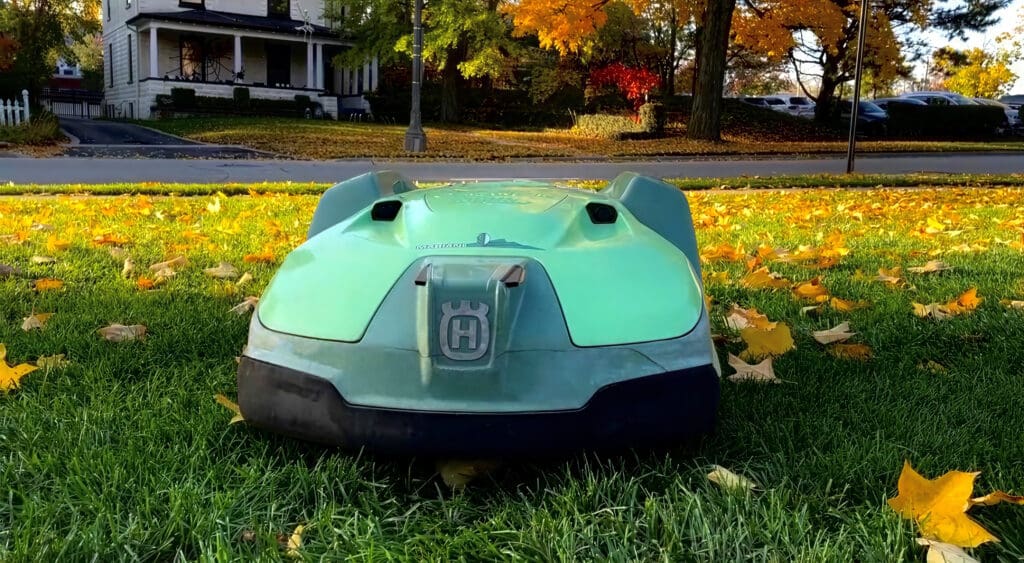
“I’d not say we’re shortening visits, but the quality of what we’re able to offer is substantial because we’re not spending the majority of the time on site mowing,” Mosely says. “We can just come on site and go straight to detail work.”
Plants Creative has also been able to scale their crew sizes down. Previously, the majority of the their crews were three-man crews, but now they only have one three-man crew and all the others are two-man crews.
Even at the museum, Chetwynd says not only are they saving money by not having people out mowing, but those staff members can now work on more mission-oriented functions.
Herold adds that using robots in the field allows them to upskill labor and give them new avenues for growth.
“You’re getting to work with technology,” Herold says. “You’re not doing as much monotonous work. We’re giving you the best-in-class tools to work with, which is really exciting to people. It gives us access to completely different labor pools previously inaccessible to the industry.”
Williams says they’ve noticed substantial improvements in the overall time required to maintain a property.
“When utilized effectively, each mower has the potential to save 40 hours of labor,” Williams says. “Extrapolating this across two mowers within the crew, we could witness savings of up to 320 hours each week.”
By keeping the lawn cut constantly, Mosley and Blinten report improved turf health.
“There’s a hidden benefit of not having to put as many chemicals on a lawn because the nitrogen nutrients in the extremely short grass clippings filter right back into the soil and feed it organically,” Blinten says.
Mosley and Blinten also say their customers respond positively to automated mowing.
“We have seen an awful lot of visitors show significant interest in the technology,” Chetwynd says. “I am glad that the safety features of the mower allow it to deal regularly with interference from kids who think R2-D2 is mowing the grass. We joke that in a museum filled with airplanes, our most popular exhibit is our iMows.”
Challenges of Robotic Mowers
The main challenge preventing robotic mowers from becoming more widespread is site limitations. Mosley evaluates customer properties to see if they are a good fit and only offers the Automower option to those clients.
“The first thing I’m looking for is one: Is there power access to be able to power up a charging station in a good location where the mower is going to be able to access the turf area?” Mosley says.
Mosley says wide-open spaces that are level tend to be the ideal landscape for robotic mowers.
Williams says larger, wide-open properties maximize their efficiency while smaller or broken-up areas of turf decrease efficiency.

Herold says the property determines the ROI of deploying robotic equipment. In some cases, they are simply not worth the trouble of deploying. He says it’s more about workflow optimization. They leave the decision of how many robots to deploy up to the individual crews.
“The people that we’re employing, they’re smart operators,” Herold says. “They know how to get their job done on time. We don’t need to solve that for them. That also leads to we don’t need to be doing a lot of this upfront work for our teams. We need to create a product that’s really easy for them to use, and it’s very intuitive.”
Keeping the fleet of robotic mowers up and running can also be an issue. Mosley says it’s a team effort ensuring there isn’t a lot of downtime with their robotic mowers.
“Just getting to them when things do go wrong and they need to be reset,” Mosely says. “We have combatted that using the Fleet Services app and training all of our management, like PCMs and the crew leaders, to be vigilant and if you see a property that has a mower that’s not in the charging station and not moving, so if it’s just sitting still in the yard, something’s wrong.”
Previously, Plants Creative wouldn’t know if there was a problem with the mower until a customer called to say the mower hadn’t moved in three days. This season, they sent out a postcard to customers giving them the steps on how to reset the mower if they notice it’s not operating.
Mosley says there’s a wide spectrum of reasons the mower might stop running, including a kid coming up and hitting the stop button. It could get stuck in a mulch bed or hung up on a toy in the yard.
Another limitation manufacturers are working to overcome is the dependence on guidewires or GPS.
“As far as robotics go, we’re always looking to see what’s coming out, but Husqvarna Automowers had a lot more time in R&D,” Mosely says. “The next biggest thing in robotics is going to be the wireless installs. So once that technology gets better, we’ll definitely be interested in that.”
Herold says they chose to build in common sense into their robotic mowers via AI so there is no need to map the site prior and the robot is not dependent on GPS like other models.
“We want to be the open-source, tech-enabled landscaping business,” Herold says. “Open-source meaning here’s what we’re doing. Here’s how we’re doing it. Here’s access to the same tools that we’re building because at the end of the day, our goal is to really to upskill the industry with technology.”
Eye on the Future
For the companies already using robotic mowers, they are all open to future robotic innovations. Willams says Color Burst intends to utilize additional robotic and autonomous applications.
“The adjustment to the iMows, and the success we have seen with them certainly does have us thinking about what else we might be able to use robotics to simplify,” Chetwynd says. “If larger units came out, we would certainly be interested. Robot edgers would probably also be on our wishlist. In short, having the iMows here has made the team comfortable with the idea of investing in this sort of technology, and looking actively for ways it can bring efficiency to our operation.”
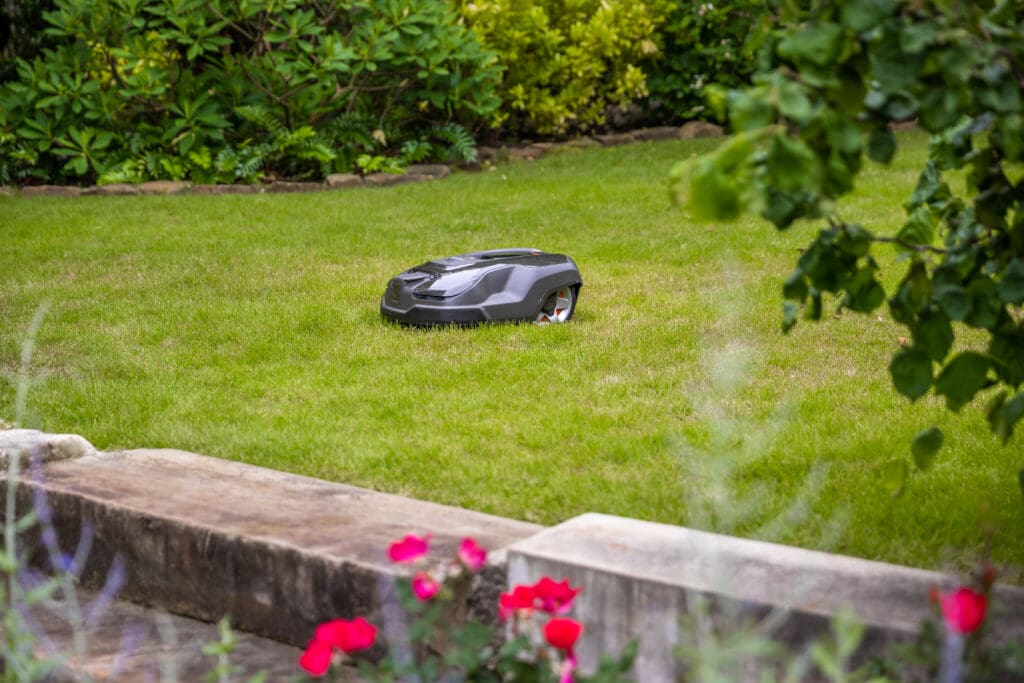
Herold says they are focused on automizing the first beachhead, which is mowing.
“I would say anything, any tool that is mechanized, 1,000% will be in our product pipeline,” Herold says.
Despite a willingness to add on more robots to their team, these businesses agree there will always be need for a human touch in the landscape.
“While robotic mowers excel at mowing grass and are likely to take on additional tasks in the future, manual oversight will remain essential,” Williams says. “Tasks such as detailing flower beds, hand pruning, and engaging with customers will always require human intervention.”
Chetwynd encourages landscape companies with limited staff who are better utilized elsewhere to consider using a robot for repetitive tasks like mowing.
As robotic mower technology advances, Williams it’s best to stay ahead of the learning curve and lead the way in pioneering this technology.
“It’s coming, whether you like it or not,” Blinten says. “So best to think about it now and get your toe in the water. In four years, if you’re not on board, you’ll be behind everybody else.”
This article was published in the July/August issue of the magazine. To read more stories from The Edge magazine, click here to subscribe to the digital edition.



